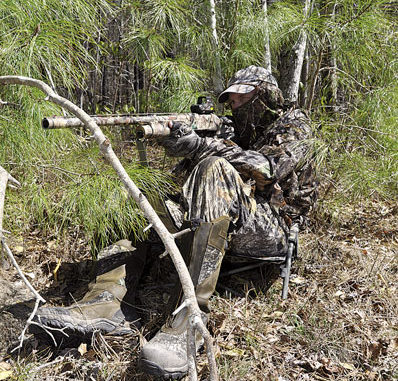
Hunt all year long by adding an electronic coyote caller to your equipment list.
A hunter perched in a tower stand stared intently down a woods road, searching for any telltale movement that might give away his quarry. Another hunter sat on the ground below, camouflaged right down to his eyeballs, lost in the mixed pine and hardwood cover. Only his eyes were visible as he waited with his elbows planted on his knees to steady the shotgun in his hands.
The silence was shattered by one of the most unnerving sounds in the natural world. The cries of a wounded cottontail rabbit pleaded softly at first, then grew so loud they demanded attention. Eventually the cottontail’s wailings faded away. In their place came chirps of an injured turkey gobbler followed by the peeping of a sparrow, toyed with before being eaten by a housecat.
The clump of undergrowth that had been Dave Merrill rose from the forest floor at the end of the calling sequence. Hauling the electronic caller from a nest of leaves that had covered it, he switched off the power. Joey Pittman climbed down from the elevated deer stand that had served as a coyote observation deck.
“I set up a calling sequence to run five or six minutes, then it re-runs,” Merrill said. “I sit for 15 minutes before I move to another spot to try again.”
Merrill, 63, is retired from a career in electronics sales. Pittman, 58, is a retired jet-engine mechanic. They were set up at Beaver Dam Hunting Club in Jones County, although deer season had long since ended. While they were hunting coyotes in the same areas where they had hunted deer, other factors helped decide which stands were the best places for hunting coyotes.
“We find scent posts with scat along the trails and roads,” Merrill said. “There is a lot of hair in coyote scat from deer, rabbits, even domestic livestock. There are sheep nearby, and if we find a sheep carcass, we know it’s a good place to hunt because coyotes feed on carrion. Other good spots are near a road-kill or where deer carcasses have been disposed.
“We have 6,000 acres, and (we) might try four spots on a calm day. If the wind is blowing, we might call from twice that many because the sound doesn’t carry as far. We don’t call too often from the same spot or coyotes will become educated and avoid that spot.”
To increase the odds for success, Merrill and Pittman park their truck as far as possible from each hunting station, typically an elevated deer stand overlooking a food plot or shooting lane. Then, they walk to the area quietly before setting up Merrill’s electronic caller. Merrill also uses motion lures to attract and hold an approaching coyote’s attention.
“A coyote is never still,” Merrill said, “so, you have to stay ready to shoot at all times. He might just stick his head out of the bushes or he might come running down a road. A coyote is difficult to hit because it lopes from side to side when approaching a call. You have to be perfectly still and completely camouflaged, because a coyote is so intent on finding whatever is making the sound he picks up anything out of place. You will probably only get one chance at a coyote, so you have take advantage of every opportunity.”
Merrill said that some motion would be necessary to get into position for shooting. That’s where a lure comes into play because it diverts the coyote’s attention from the shooter. He wears camouflaged clothing, gloves and a face net. Sometimes he uses a camouflage-fabric turkey blind for further concealment when he sets up on the ground. He may also use a folding stool to enable him to see over a ditch bank or vegetation. He shoots the same camouflaged 12-gauge shotgun that he uses for turkey hunting, loading it with a special coyote load.
“On my shotgun, I use a red-dot sight because it helps me get on the coyote quicker,” he said. “It’s easy to see the red dot when you’re hidden in the shadows.”
When hunting from an elevated stand, Merrill said a deer rifle is preferred because it is more effective for longer shots presented from the higher vantage point.
“You should use whatever rifle you use for deer hunting,” he said. “The rifle you shoot best gives you the best chance for hitting a coyote. A 7mm Magnum, 7mm-08 or .30-06 is great, but, for a dedicated coyote rifle, an AR-style .223 semi-automatic rifle is probably the best because it gives fast follow-up shots.”
While most coyotes killed at Beaver Dam are taken during deer season, Merrill said he has also taken them by attracting them with mouth calls and electronic calls. He uses a mouth call that imitates a coyote howl and a diaphragm type turkey call blown at a very high pitch. He and Pittman have taken several coyotes with typical coloration, but have also taken black-phase coyotes.
“We first started seeing coyotes six or seven years ago while we were deer hunting,” Pittman said. “We also heard them howling, barking and whining in the afternoons. At first, we didn’t even know what they were and didn’t know where they came from. I think they prey on turkeys and deer, so we decided to try hunting them.”
Colleen Olfenbuttel is a biologist for the N.C. Wildlife Resources Commission who runs the black bear and furbearer projects. She said coyotes are classified as wild animals in North Carolina, and any animal classified as a wild animal is covered under regulatory authority of the Commission.
“We decided coyotes can be hunted 365 days a year so anyone with coyotes on their property has a means to deal with them by hunting,” she said. “They (had) occupied all 100 counties as of 2005, and we found them at Cape Hatteras in 2009.”
Olfenbuttel said the first confirmed sighting was in Johnston County in 1955; the next occurred in Wake County in 1970. There were unconfirmed reports before 1955, including a report of a hunter shooting a coyote in Gaston County in 1938.
“All of the reports we received prior to the late 1980s or early 1990s were probably from illegal releases by hunters,” she said. “Then they started showing up in western North Carolina, and we believe those coyotes showed up as part of the overall range expansion of coyotes into the Eastern U.S.
“Before that, they were mainly in our piedmont and coastal regions. From there, they made an eastward movement into the piedmont, and those already in the eastern part of the state began expanding westward until these two populations met in the piedmont. We would have had them whether or not they had been illegally introduced. Illegal introductions only hastened the process.”
Olfenbuttel said biologists are learning more about the impact of coyotes on other wildlife in North Carolina through studies being conducted by N.C. State University. A diet study will be finished in a few months. Preliminary results show coyotes feed on whatever is readily available at the time. For example, their digestive tracts may be full of grasshoppers in summer and deer hair in winter. On Fort Bragg, a study is being conducted on coyote movement, home range and diet. Tracking collars have been placed on coyotes, fawns and turkeys to determine if coyotes are impacting Fort Bragg’s deer and turkey populations. Remote cameras have also been placed overlooking turkey nests.
Olfenbuttel said the legislative statute that limits fox harvests also limits coyote control. In counties where foxes cannot be taken, coyote take is essentially zero.
“A coyote trap will also catch a fox, and a coyote trapper may have to spend lots of time releasing foxes and resetting traps in counties where fox trapping is prohibited,” Olfenbuttel said. “We don’t know for sure if it translates to hunting opportunities, but intuitively, it may.
“A good example is Johnston County, which, prior to 2007, did not have a fox-trapping season. In 2007, through local law and support of county commissioners and livestock interests, they passed a fox-trapping season. Prior to that, trappers harvested one coyote per year. The coyote harvest increased to approximately 42. Trappers were willing to trap coyotes because they could also trap foxes.”
Olfenbuttel said fox hunting and trapping authority lies with the state legislature, and any county must pass a local law to have a fox-trapping or a fox-hunting season for taking foxes with weapons. Foxes cannot be trapped in 65 of North Carolina’s 100 counties. In 49 counties, they can be taken by weapon but not by trapping. She said that under the current statutory authority, county commissioners must make the wildlife management decisions that have resulted in the Commission’s 10-page fox-law publication, whereas the Commission’s recommended season is based on fox pelts being prime and fox kits not being dependent on the female.
“Last year, I discussed the link between fox trapping and coyotes before a legislative study committee because prohibiting fox trapping is a hindrance to trapping coyotes,” she said. “As a result, a bill was passed to study the current fox law. We’ve also made recommendations to the (wildlife) commissioners regarding using artificial lights for hunting coyotes at night. To avoid hunting at night when bucks have antlers, we’ve recommended allowing artificial lights from mid- to late-June to mid- to late-August. We’ve also recommended requesting legislative authority to amend statutory language to allow the (Commission) to regulate use of electronic calls. Under the existing regulatory authority, only crows and coyotes can be hunted with electronic calls.”
Olfenbuttel said hunting can only be considered a way of controlling coyotes on a localized scale, not a way of eliminating them. But for Merrill and Pittman, hunting coyotes is also another hunting opportunity.
“I’ve killed most of my coyotes during deer hunts,” Pittman said, “but hunting coyotes with calls is another way of hunting after deer season ends. Our lease is expensive. Hunting coyotes is way of getting in more hunting for the price of the lease.”

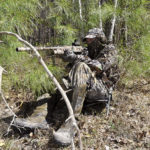
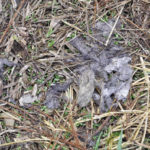
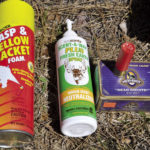
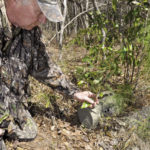



Be the first to comment